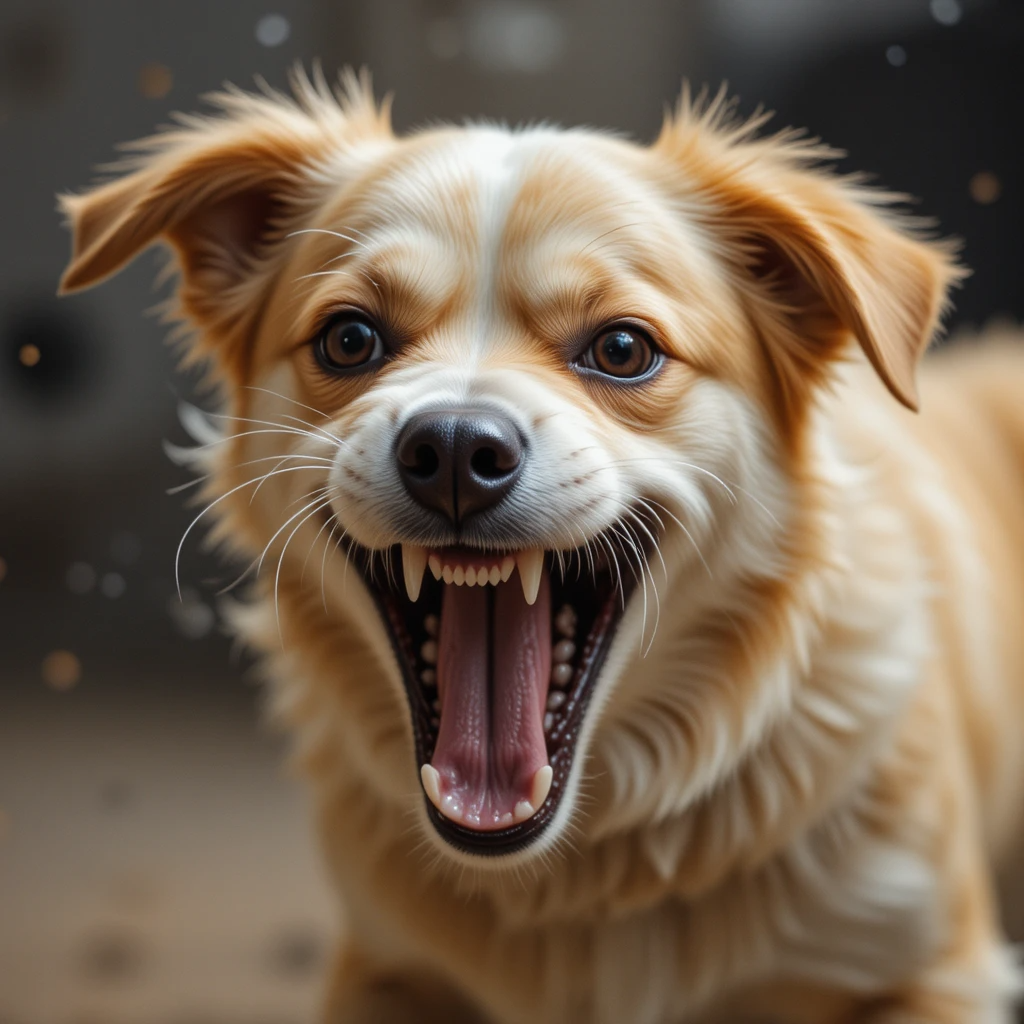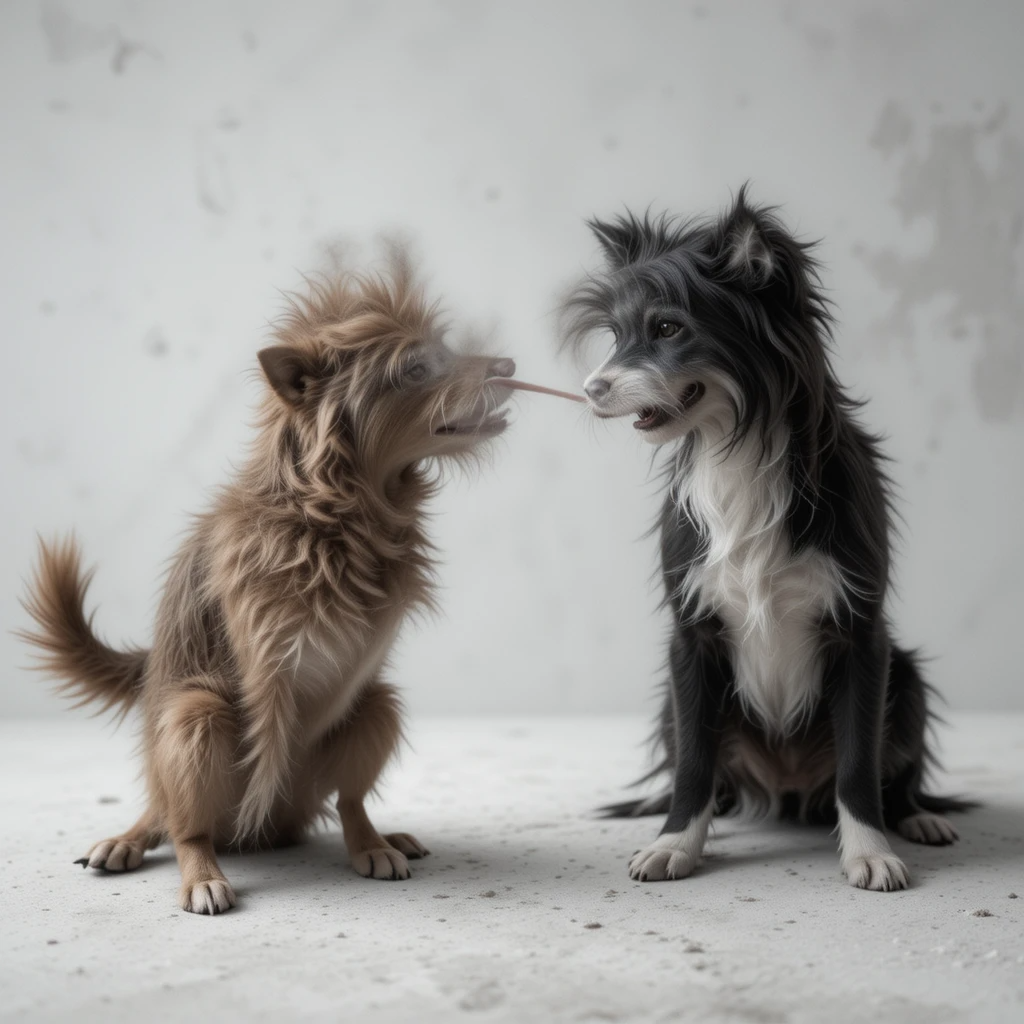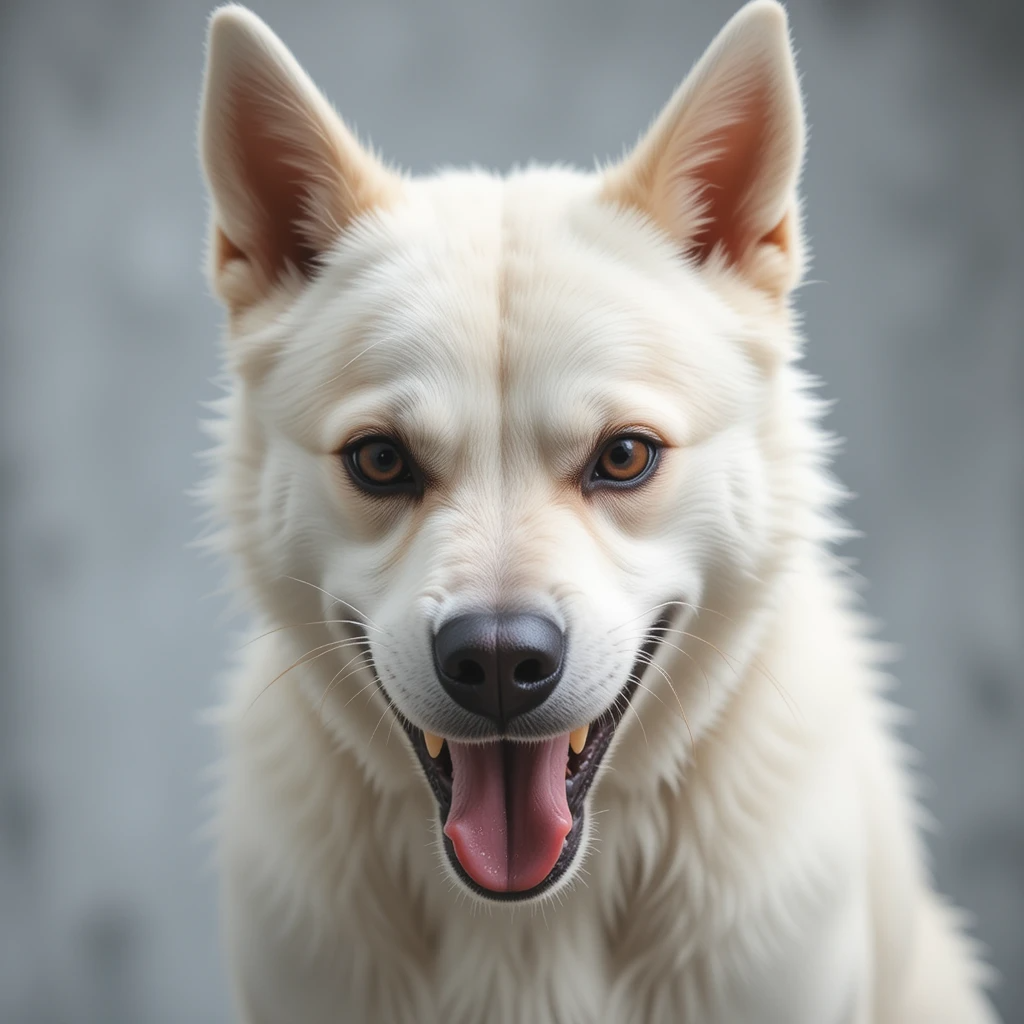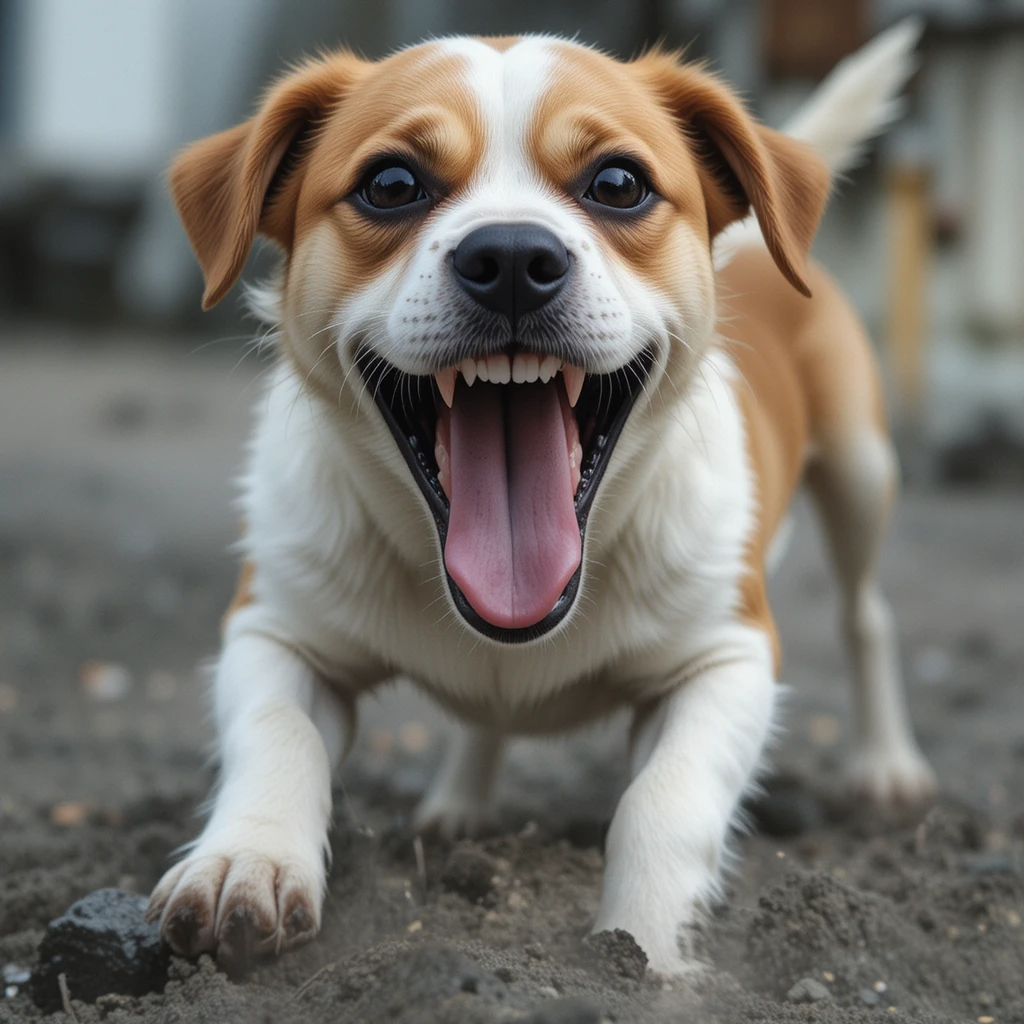When you own a dog, encountering fear aggression in dogs is not uncommon. This type of aggression comes from a deep-rooted fear that can cause your dog to act out unexpectedly. It’s important to remember that fear aggression isn’t a sign of a bad dog, but rather a response to feeling threatened or anxious. Dogs that experience this may show manifestations such as growling or even biting. These behaviours are ways of expressing their fear and trying to protect themselves in a situation that feels unsafe to them.
As a dog owner, understanding fear aggression means being able to distinguish it from other forms of canine aggression. While fear aggression stems from anxiety, other forms of aggression, like territorial or protective aggression, come from different triggers. Being able to identify these differences allows you to approach your dog’s behaviour with more care, providing the right kind of training and support. Over time, you can help your dog feel safe and reduce their fear-driven responses. Understanding the root causes of these reactions is crucial in guiding them through this difficult behaviour.
Table of Contents

What is Fear Aggression in Dogs
Fear aggression in dogs occurs when they react defensively to what they perceive as a threat, even if that threat isn’t real. As a pet owner, it’s important to recognize this behaviour and address it appropriately to ensure the well-being of both your dog and those around it. When a dog shows fear aggression, it often feels like it has no choice but to defend itself. This defensive behaviour is not about attacking but about survival, and it’s rooted in a self-defence instinct.
This type of aggression is usually an exaggerated response to a situation, which is what we call reactive behaviour. The key difference between reactive behaviour and regular aggression is that the latter often involves a deliberate intent to cause harm.
While fear aggression is driven by anxiety, it’s important to note that not all types of aggression in dogs are fear-based. For example, predatory aggression is driven by the dog’s natural hunting instincts and is governed by the predatory motor sequence rather than fear. As someone who has worked with dogs, I’ve seen how understanding these different triggers can make a huge difference in handling and training. Recognizing the signs early on can help prevent escalation and ensure a calmer, more controlled response from your dog.
Causes of Fear Aggression in Dogs
Fear aggression in dogs often arises from traumatic past experiences such as being abused or abandoned. These negative experiences create a sense of fear that leads the dog to use aggression as a defence mechanism. Dogs that have been exposed to harsh environments or lacked proper early socialisation may also develop fear aggression. Additionally, sudden changes in their environment can be a trigger for this type of dog aggression.
While there is a genetic component to all behaviour, fear aggression is usually a learned behaviour. For example, if a dog feels threatened, it may learn that showing aggression is an effective way to protect itself. Over time, this behaviour becomes a pattern that increases the dog’s motivation to create distance from the perceived threat. Protective aggression can also emerge as a form of self-defence aggression, where the dog uses aggression to defend itself in a threatening situation.
Signs and Symptoms of Fear Aggression in Dogs
It can sometimes be difficult to recognize a fear-aggressive dog, as the signs may not always be obvious. Some common warning signs include growling, barking, baring teeth, snapping, and biting, especially when the dog is in a fear-induced state. These are often the more noticeable signs, but there are also more subtle signs that require keen observation. For example, a dog might display anxious behaviours like lip licking or yawning, both signs of stress that could lead to more serious aggression if not addressed. It’s essential for pet owners to recognize these early signs and know how to defuse situations before they escalate.
In addition to these obvious and subtle signs, a dog exhibiting fear aggression may show physical signs such as a low body posture, with its tail tucked between its legs and ears pinned back. Another key sign is whale eye, where the dog’s eyes widen, and you can see the whites. These behaviours are often a dog’s way of expressing its discomfort or fear. If you notice any of these signs, it’s crucial to take action quickly, as they indicate that the dog feels threatened and may respond aggressively.
Why Do Dogs Resort to Aggression?
In the wild, dogs rely on territorial aggression to protect themselves and their territory from other animals. Even though domestic dogs live in comfortable homes, they still carry these instincts. When a dog feels threatened, it may resort to aggression because it has learned that this strategy often works. Simply put, aggression is a natural response that helps dogs deal with a threat.
If it results in a positive outcome, such as removing the threat, the dog is more likely to use aggression again in the future. Over time, this reinforces the behaviour, teaching the dog that aggression is an effective strategy for handling difficult situations. This instinctive behaviour shows how deeply rooted these reactions are, even in pets with safe and comfortable living environments.

Dogs’ Natural Responses to Threats
Dogs have four main natural responses to threats: fight, flight, fidget, and freeze. When a dog feels threatened and escape isn’t an option, it may choose the fight response, which is where aggression comes into play. This happens when the dog perceives a direct threat and doesn’t have an opportunity to flee. Flight is often impossible in many situations, especially when the dog is on a lead or in a confined space, which is why lead barrier aggression or reactivity is so common in these contexts.
These instinctive reactions can vary depending on the situation, and a dog may even fidget or freeze in some cases when unsure of how to respond. It’s crucial to understand these natural responses because they show how deeply rooted aggression can be as a survival tactic. In certain situations, the dog might resort to these behaviours, especially when feeling cornered or under pressure, as its first line of defence.
A Guide to Managing Fear Aggression in Dogs
1. Professional Expertise
When dealing with fear aggression in dogs, hiring a professional dog behaviourist is essential. These experts bring specialized knowledge and skills to handle each situation with a tailored approach. Instead of using a one-size-fits-all solution, a professional evaluates your dog’s unique needs and creates a personalised program to help manage their aggression. Their methods are rooted in a deep understanding of canine psychology and behavioural science, ensuring that the strategies used are both effective and humane.
By working with a professional, you can be sure that your dog is receiving the right kind of support to address their fears. This ensures that the approaches used are not just general solutions but are carefully chosen to suit your dog’s individual needs and temperament. With the guidance of an expert, you can develop a plan that’s tailored to reduce fear aggression and create a safer environment for both your dog and those around them.
2. Behaviour Modification Techniques
One effective way to manage fear aggression in dogs is through behaviour modification techniques like counter-conditioning and desensitisation. These methods help change a dog’s emotional response to fear stimuli. The goal is to gradually expose the dog to the source of their fear in a safe and controlled manner, so they can learn to associate previously scary situations with positive outcomes. By doing so, the dog’s fear response can be replaced with more desirable behaviour over time.
For example, when a dog is exposed to a fear source at a manageable level, they start to relax rather than react aggressively. This gradual approach helps in reducing or even eliminating the aggressive reactions that typically occur when the dog feels threatened. The key here is consistency and patience, as the process helps the dog form a new association with what once triggered their fear.
3. Veterinary Collaboration in Addressing Fear Aggression
When dealing with fear aggression in dogs, it’s crucial to remember that behavioural issues can sometimes have a deeper root cause. In some cases, dogs who act aggressively out of fear may actually be struggling with underlying medical issues. As a result, involving a veterinarian early on can make a huge difference. A thorough veterinary assessment not only helps to identify potential health problems but also ensures that all aspects of the dog’s overall well-being are addressed. This step is essential for creating a stable foundation for behavioural training.
The collaboration between pet owners and veterinarians is vital in these situations. Medications prescribed by the vet can assist in reducing the dog’s anxiety levels, which might be a major contributing factor to the fear aggression. I’ve seen firsthand how combining medication with behaviour modification can make a significant impact. This partnership between veterinarian and trainer provides a holistic approach, helping dogs feel more at ease and improving their chances of successful behavioural changes. With proper care and guidance, many dogs can overcome these fears and lead happier, healthier lives.
4. Safety Measures
When managing fear-aggressive dogs, the focus must always be on safety. One of the first steps is ensuring that situations which could lead to dog bites or other forms of aggressive behaviours are prevented. This is where strategies like muzzle training come into play, allowing the dog to feel comfortable wearing a muzzle. It’s also essential to employ avoidance tactics to steer clear of known triggers that could set off fearful reactions.
I’ve worked with several dogs where controlling the dog with a leash in public spaces made all the difference. These steps not only protect the dog, the owner, and the public, but also create a secure framework for further behaviour modification. With these safety protocols in place, we can begin working towards helping the dog become more comfortable and less fearful.
5. Preventing Aggressive Incidents
Understanding the triggers behind your dog’s fear aggression is a crucial first step in prevention. By identifying these triggers, you can take proactive measures to either avoid them or start the process of desensitizing your dog over time. I’ve found that minimizing exposure to known aggression triggers often works better than waiting for aggressive behaviours to happen and trying to manage them afterward. This proactive approach not only reduces the chances of encounters turning aggressive but also aligns with the saying, “prevention is better than cure.”
Throughout my experience working with dogs, this approach has proven to be highly effective, and I’ve seen significant improvements in behaviour by consistently avoiding triggers. Instead of letting aggression escalate, it’s far more beneficial to focus on preventing it from happening in the first place through a structured and patient process.
6. Structured Socialisation
For dogs dealing with fear aggression, structured socialisation is an essential tool in helping them overcome their fears. One effective method I recommend is organizing meet-and-greets with other dogs in neutral ground. These sessions should take place in controlled settings to ensure the dogs feel safe and can interact properly. At first, it’s important that both dogs are on-leash to maintain safety, but as they become more comfortable with each other, the process can progress. Through these gradual introductions, dogs can build social skills and gain the confidence needed to reduce their fear and aggression toward others. Over time, I’ve seen many dogs grow more relaxed and less fearful, which results in more positive social interactions.
In my experience, this approach helps dogs feel less threatened in social situations, which can prevent the escalation of aggressive behaviours. By carefully managing these introductions, we can give the dog the opportunity to learn, without the pressure of overwhelming situations. This method not only reduces aggression but also promotes healthier, more confident relationships with other dogs.

7. Importance of Training
When dealing with fear aggression in dogs, training plays a critical role in managing their behaviour. Regular and consistent training is essential to help reinforce desired behaviours and work through any problematic reactions in a safe, controlled setting. In my experience, sessions like these can help calm fearful dogs and improve their responses to certain situations. Training also strengthens the bond between the dog and owner, which is a vital part of any behavioural modification process. This relationship helps create a foundation for lasting improvements in the dog’s behaviour.
Through regular training, dogs are better equipped to handle triggers that could lead to aggression. This method is not just for short-term fixes but is essential for the long-term management of fear aggression. Over time, consistent training helps dogs feel more secure and confident, which in turn reduces the chances of fear-based aggressive responses.
8. Significance of Early Socialisation
One of the most important steps in preventing fear aggression in dogs is early socialisation. This involves exposing young puppies to various experiences, such as different sights, sounds, and social interactions with other beings. The ideal time for this exposure is during the critical developmental period, typically between 3 to 16 weeks of age. I’ve noticed that when puppies experience these different situations at a young age, they learn to cope with new challenges in a positive way. This helps prevent fear-based reactions and helps the dog grow into a well-adjusted adult.
By ensuring that puppies are exposed to a variety of experiences, we can significantly reduce the chances of fear aggression developing later in life. This early exposure helps them understand the world around them in a safe, controlled manner, giving them a strong foundation for their future behaviour. This practice not only creates confident puppies but also sets the groundwork for a calm, well-mannered adult dog.
9. Effectiveness of Positive Reinforcement
One of the most effective tools in managing fear aggression in dogs is positive reinforcement. By rewarding dogs with treats, praise, or toys when they exhibit good behaviour, they begin to associate acting calmly or obeying commands with positive outcomes. I’ve found that when dogs experience these rewards consistently, they are more likely to repeat those behaviours. This approach not only encourages better behaviour but also strengthens the bond between the dog and the owner. The key here is to use this method consistently to see noticeable improvements.
What’s interesting is how positive reinforcement also affects the dog’s body language. Over time, I’ve noticed that dogs start to show more relaxed and confident postures as they realize they will be rewarded for good behaviour. This humane approach creates a more trusting and positive relationship, which ultimately helps in reducing fear aggression. It is not just about changing their behaviour but also improving their overall well-being and relationship with their owners.

